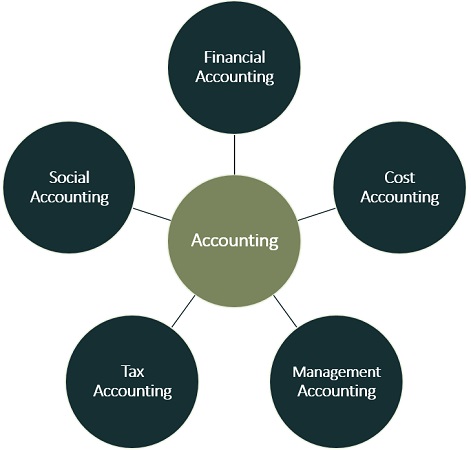Content

However, there are two main other ways of looking at accounts payable that are both more commonly used as a performance metric. An important part of accounts payable’s role is to ensure that robust internal controls are in place to avoid errors, such as duplicated payments or incorrect sums being paid. Accounts payable represents the amount that a company owes to its creditors and suppliers . Accounts payable is recorded on the balance sheet under current liabilities.
PHARMA-BIO SERV, INC. MANAGEMENT’S DISCUSSION AND ANALYSIS OF FINANCIAL CONDITION AND RESULTS OF OPERATIONS. (form 10-K) – Marketscreener.com
PHARMA-BIO SERV, INC. MANAGEMENT’S DISCUSSION AND ANALYSIS OF FINANCIAL CONDITION AND RESULTS OF OPERATIONS. (form 10-K).
Posted: Fri, 27 Jan 2023 08:00:00 GMT [source]
The buyer purchases merchandise inventory on credit, which requires two journal entries. Firstly, the buyer debits Merchandise Inventory, a Current assets account. Secondly, the buyer credits a Current liabilities account, Accounts payable. Current liabilities are a company’s obligations that will come due within one year of the balance sheet’s date and will require the use of a current asset or create another current liability. Generally, vendors bill their customers after providing services or products according to terms mutually agreed on when a contract is signed or a purchase order is issued. Terms typically range from net 30 — that is, customers agree to pay invoices within 30 days — to net 60 or even net 90, which a company may choose to accept to secure a contract. However, for large orders, a company may ask for a deposit up front, especially if the product is made to order.
Accounts Payable Calculator – Excel Model Template
BlankSpaces is not alone when it comes to this type of stumbling block. Luckily, their AP department realized quickly How Do Accounts Payable Show on the Balance Sheet? that they were headed for disaster if they didn’t find a way to shape all locations into a more cohesive unit.
- An AR or AP balance on a cash basis balance sheet may be caused by an AR or AP transaction.
- Find here the proven principles and process for valuing the full range of business benefits.
- Say on-trend eyewear maker StyleVision orders $500 worth of new frames from its wholesale supplier, Frames Inc., which sends the invoice on Aug. 15 with net-30 terms and no discount for early payment.
- The suppliers are independent persons willing to give the company credit to purchase the raw materials.
In such conditions, firms earn more with funds they borrow than they pay for debt service. Secondly, the other significant “Liabilities” account class, of course, is “Long-Term Liabilities.” These debts are not https://online-accounting.net/ due for total pay off in the next year. How double-entry transactions for payables ensure that the Balance Sheet Always balances. This article explains and illustrates the payables role in financial accounting.
Is Accounts Payable a Debit or Credit Entry?
Finally, the vendor invoice is sent by the vendor to the purchasing organization to request payment for the goods or services provided. Accounts payable receives the vendor invoices and begins the invoice management process. Occasionally, unapplied payments are caused when you do not enter the corresponding invoices or bills. To correct this situation, you must enter the missing invoices or bills before you can apply the payments to them. Free AccessFinancial Metrics ProKnow for certain you are using the right metrics in the right way. Learn the best ways to calculate, report, and explain NPV, ROI, IRR, Working Capital, Gross Margin, EPS, and 150+ more cash flow metrics and business ratios.

For twenty years, the proven standard in business, government, education, health care, non-profits. A highly leveraged business benefits from its debt when sales are strong, and the economy is healthy. However, the debt burden penalizes the business, instead, when sales and the economy are weak. In that case, a high leverage companies spend more on debt service than they earns from the funds they borrow.
What are accounts payable?
Accounts payable, on the other hand, represent funds that the firm owes to others. A payable is created any time money is owed by a firm for services rendered or products provided that has not yet been paid for by the firm. This can be from a purchase from a vendor on credit, or a subscription or installment payment that is due after goods or services have been received. Accounts payable are the opposite of accounts receivable, which are current assets that include money owed to the company. An accounts payable invoice is a request for payment sent from a supplier to the accounts payable department.
- “Accounts payable” refers to an account within the general ledger representing a company’s obligation to pay off a short-term obligations to its creditors or suppliers.
- Let’s say a fictional business called Paint World sends you an invoice for $500 to pay for a shipment of paint.
- Learn financial statement modeling, DCF, M&A, LBO, Comps and Excel shortcuts.
- Additionally, because Order.co has already established partnerships, they’re saving additional time and money by not dealing with annual memberships.
Analysts regard the balance of funding between these two sources as a measure of the firm’s level of leverage. The greater the proportion of total funding that comes from lenders, the greater is the firm’s degree of leverage. For some companies, owners provide the majority of funding, while for others creditors supply most.
Importance of Accounts Payable in the Balance Sheet
It’s appropriate to determine a company’s financial ratio to other companies in the same industry, as it is with other profitability metrics. Each industry may well have a standardised turnover differential that is exclusive to that sector.
The amount of accounts payable recorded on a balance sheet is the amount due to vendors and suppliers as of the date the balance sheet is run. Accounts payable are short term debts to creditors or suppliers for goods or services.
What Do Accounts Payable and Accounts Receivable Have in Common?
In certain calculations, the numerator will not include net credit purchases; rather, it will utilize the cost of goods sold. The total accounts payable at the beginning of an accounting period and accounts payable after the period are added together and then divided by 2. AP can also refer to a company’s accounts payable department, which is responsible for handling the accounts payable process and making payments. The AP department usually handles internal expenses as well, such as business and travel expenses. Is defined as the total unpaid bills owed to suppliers and vendors for products/services already received but were paid for on credit as opposed to cash payment. When using the indirect method to prepare the cash flow statement, the net increase or decrease in AP from the prior period appears in the top section, the cash flow from operating activities. Management can use AP to manipulate the company’s cash flow to a certain extent.
- The balance of the collective accounts payable accounts must equal the history balance recorded for all vendors.
- The sum of all outstanding amounts owed to vendors is shown as the accounts payable balance on the company’s balance sheet.
- The business may have negotiated more favorable payment conditions that will enable it to delay payments without incurring any additional fees.
- A key metric for finance teams to track is days payable outstanding .
- But while visibility into AP should be restricted, it’s important to have more than one person involved to catch any potential issues.
Many companies have a department to manage the accounts payable process. These employees are responsible for processing invoices and making sure payments owed to other businesses are accurate and paid in a timely manner. A company’s accounts payable ledger lists its short-term liabilities — obligations for items purchased from suppliers, for example, and money owed to creditors.